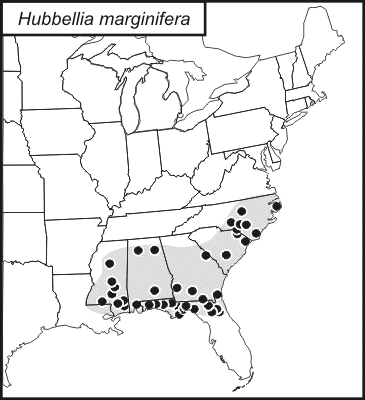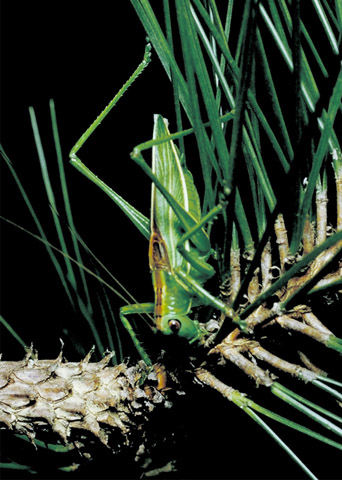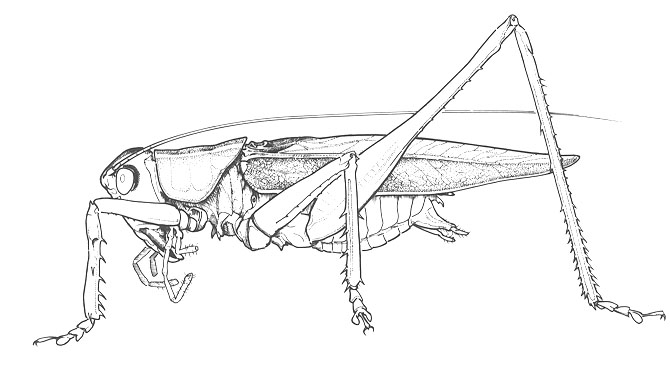|
Song at 25°C:
|
High-pitched clicks repeated indefinitely at ca. 1.5 sec intervals. Only at night. Similar to the call of the carinate katydid (Amblycorpha carinata) but higher pitched, "thinner," and issuing from the crowns of pine trees.
|
|
Identification:
|
Length 33-37 mm. Camouflaged for life among pine needles--wings green with thin longitudinal light stripe and white margins. Brown dorsal stripe extending from top of head to near tips of forewings, including male stridulatory area.
|
|
Similar species:
|
The larger meadow katydids (Orchelimum) are similar in form and color but lack the white margins on the wings. The only species that lives in pine trees is smaller (length less than 27 mm).
|
|
Habitat:
|
Tops of pines of species having medium to long needles (e.g. loblolly, slash, longleaf).
|
|
Season:
|
June-Oct.
|
|
Seasonal data:
|
N. Fla. data.
|
|
Remarks:
|
This species is among the most rarely seen of our native katydids. Prior to l940 it was known from two specimens and no more than 40 have been collected since. Nevertheless it is widespread in most of the southeastern United States and hundreds can be heard in an evening by driving through pinewoods. The problem is that individuals seldom occur closer to the ground than 20 feet. They usually are much higher and in trees that have the first limbs above 30 feet. Those seeking specimens should first learn the song and then search for individuals calling from low, easy-to-climb trees. Once spotted with a light, specimens are usually not difficult to collect—if they can be reached. At least they don't fly away! (They apparently can fly but don't do so when pursued.) The few females that have been collected have ovipositors 25-33 mm long. Where they deposit their eggs is unknown. A European relative with a similar ovipositor is said to lay its eggs in crevices in the soil. Perhaps our species deposits eggs in crevices in the upper limbs or trunk of pine trees.
|
|
References:
|
Hebard 1927, Hubbell 1940, Rehn 1943, Uvarov 1940.
|
|
Nomenclature:
|
OSF (Orthoptera Species File Online).
|










